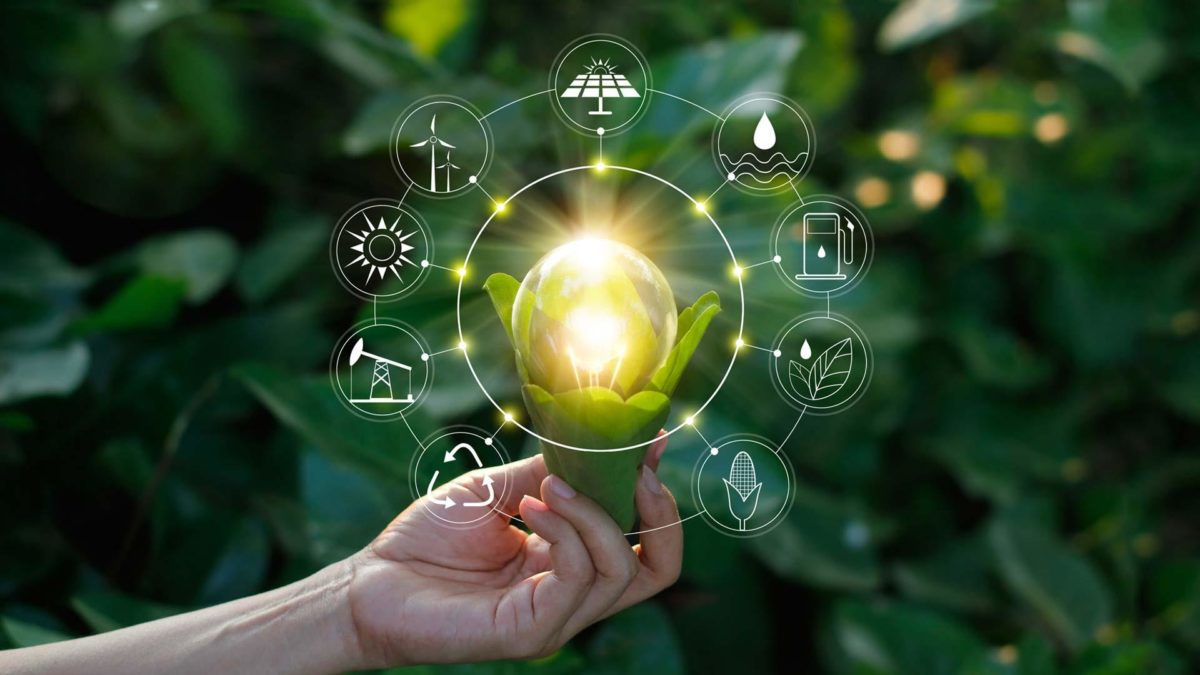Innovations in technology are redefining the energy sector, facilitating a move away from large-scale, centralized, dispatchable power to become cleaner, decentralized and more personal. Here, we identify three areas where digitization could accelerate this industry transformation.
While the most obvious signs of this change can be seen through the advances made in renewable energy technologies such as wind and solar, behind the scenes a new digital backbone is being established that allows the wind turbines, solar panels and batteries that produce and store power to work more effectively.
These technologies are both revolutionizing the utilities that provide your power, as well as enabling new competitors to emerge and provide new services. The energy sector may have come to the digital economy a little later than some other sectors, but it is catching up fast.
Digitization – The Fourth Industrial Revolution
Often referred to as the Fourth Industrial Revolution, this digital backbone will be the crucial component of the smart grid of the future. It will enable renewable energy projects to be integrated into the grid, selling their output either to the local utility or to corporate customers via a PPA (Power Purchase Agreement)
One of the most important, but least noticed, innovations of recent years has been the addition of intelligent sensors to virtually every piece of equipment that uses or produces energy. These sensors upload information, creating an “Internet of Things” (IoT) that allows operators to see how particular projects or pieces of equipment are operating, when they need maintenance – allowing problems to be fixed before they happen – and alerts if they do malfunction.
At a larger scale, grid operators can also optimize the performance of the network and integrate more distributed, decentralized energy, such is the increased control afforded by the increasing detail in the vast amount of data that becomes available. For example, wind and solar have the potential to be drawn upon intermittently – and therefore more effectively – when coupled with advances in energy storage technologies.
Until recently, much of this data would have been left unanalysed because we lacked the tools to do so. But the advent of big data analysis techniques, using artificial intelligence and machine learning, allows that information to drive efficiency across everything from individual devices to the entire grid.
AI in action
Artificial intelligence is already being used to monitor consumption, store energy more efficiently, and improve grid stability. It will also enable the flourishing of the smart grid through the integration of a multitude of new sources of energy, from rooftop solar panels to giant offshore wind farms, into the wider grid network. Torsten Henzelmann, Partner at consultancy Roland Berger, asserted that AI could improve efficiency by a fifth within the next five years.
From energy trading to weather forecasting, machine learning will help the energy sector to operate more efficiently and reduce costs.
While energy storage is becoming a much more central element of the energy system, digital technology is also enabling the creation of ‘virtual power plants’, where aggregate electricity users can switch machinery on or off as required to alter their demand, so that it better matches supply. Machine learning will help utilities make more accurate forecasts of the load reduction needed in demand response.
Crypto-energy contracts
Blockchain, the technology behind cryptocurrencies such as Bitcoin, will allow digital peer-to-peer platforms to emerge, through which individual customers will be able to buy and sell energy from their neighbors, thanks to ‘smart contracts’ that can trigger transactions automatically. Benoit Laclau, EY’s global power and utilities leader has stated that “what we are witnessing is a power shift – the advent of an energy sharing economy.”
Other potential Blockchain applications include authenticating renewables at the point of origin and keeping a record of emissions’ permits. Many are also considering its application as a grid management tool that can record energy flows to highlight anomalies in the network, according to Laclau.
These technologies will continue to drive innovation and could lead to the creation of new business models for delivering energy, such as new ways to manage networks by shifting peak demand from one time of day to another.
By enabling the integration of microgrids into the wider network, they will also improve the resilience of the grid at large, and of supplies for users of microgrids.
There will, no doubt, be great challenges in harnessing the full potential of these digital advances. But, with much greater operational efficiency and, ultimately, a reduction in customer bills standing tall as the hero benefits from such change, it’s a revolution that the energy industry must embrace, and then strive to push to the forefront.
